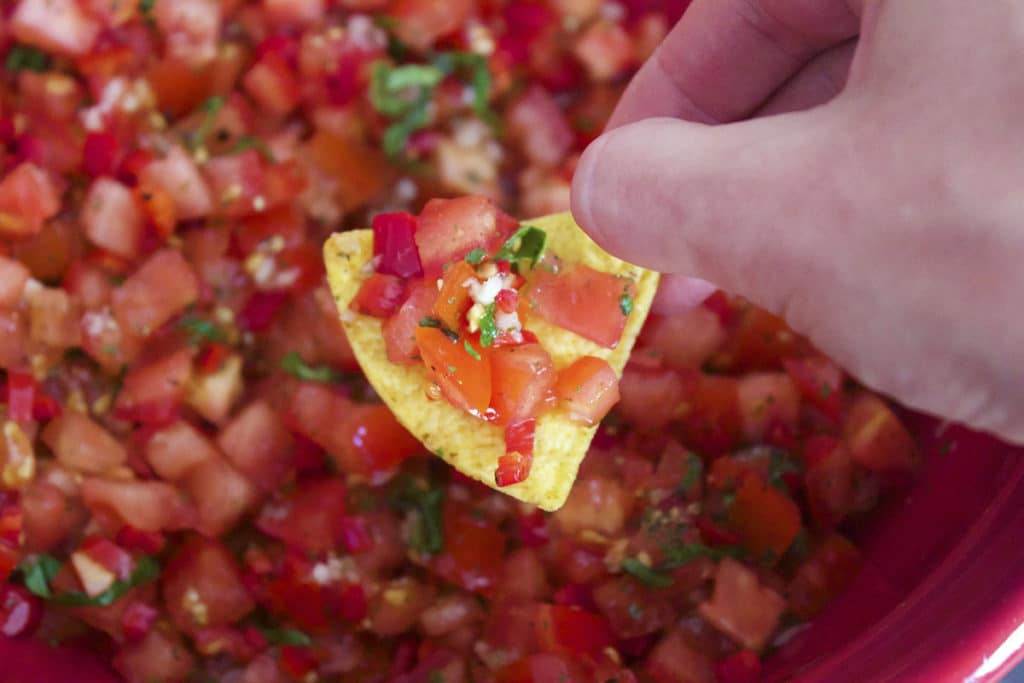
Freezing salsa sounded like the perfect solution when I had way too much leftover, but when I thawed it, the results were nothing like I hoped. The texture was watery, the cilantro turned dark, and the flavor just wasn’t the same. So, I started digging into why freezing salsa can go so wrong.
After a few experiments (and more than a few failed batches), I finally figured out what makes the difference between a soupy mess and salsa that actually tastes great after thawing.
Here’s what I learned, and how you can freeze salsa the right way.
Why Freezing Salsa Is Tricky (and What’s Really Going On)

Once I started digging into why my frozen salsa turned out so poorly, it all came down to science. Salsa seems simple, chopped vegetables, herbs, and acid, but those ingredients don’t play nicely with freezing.
- Tomatoes and onions have high water content, so ice crystals rupture their cell walls, releasing liquid and turning everything soft once thawed.
- Cilantro and other herbs are delicate; freezing changes their color and flavor.
- Acidic ingredients like lime juice can intensify over time, throwing off the balance.
According to the National Center for Home Food Preservation, those texture and flavor changes are completely normal, they’re just the result of how plant cells react to freezing. Once I understood that, the fixes became much clearer.
What I Learned Before Freezing (Save Yourself the Heartache)
Once I figured out why salsa struggles in the freezer, I started experimenting. After a few watery flops, here’s what actually worked:
- Blend it a bit. Chunky salsa turns mushy after thawing, but a lightly blended version holds up much better. Pureed veggies freeze more evenly and keep their texture.
- Skip the cilantro. It darkens and turns limp in the freezer. Add it fresh after thawing, or freeze the cilantro separately if you really want to save it.
- No dairy allowed. Creamy or cheese-based salsas separate and get grainy. They just don’t recover after thawing.
- Taste first. Lime and vinegar flavors intensify in the freezer, so go lighter before freezing and adjust after thawing.
Because of this, it is highly recommended that you make your salsa fresh when you can. Usually, when this dish is frozen, it is often used as an ingredient when cooking, as opposed to being used as a dip.
My Step-by-Step Salsa Freezing Process (After Multiple Failed Attempts)
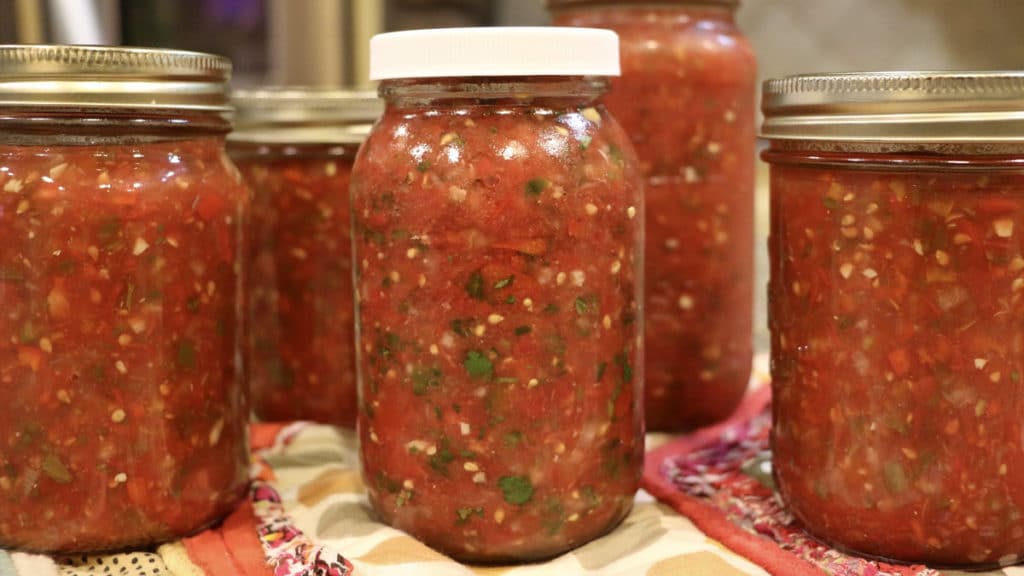
How I Portion Everything Now
Small portions saved my freezer game. I can’t stress this enough – after trying to freeze a gallon of salsa in one container (don’t do this), I switched to smaller portions and everything improved.
Freezer bags (my personal favorite):
- I use heavy-duty freezer bags, not regular storage bags
- 1-2 cup portions work perfectly
- I squeeze out every bit of air I can find
- Laying them flat means I can stack them like files
Ice cube trays (game-changer for breakfast):
- Perfect for adding to morning scrambled eggs
- I freeze for 3-4 hours, then dump into labeled bags
- Each cube is about 2 tablespoons
Airtight containers:
- I only use these for salsa I know I’ll use all at once
- Leave minimal headspace to reduce air exposure
- Label the lid AND the side (learned that lesson)
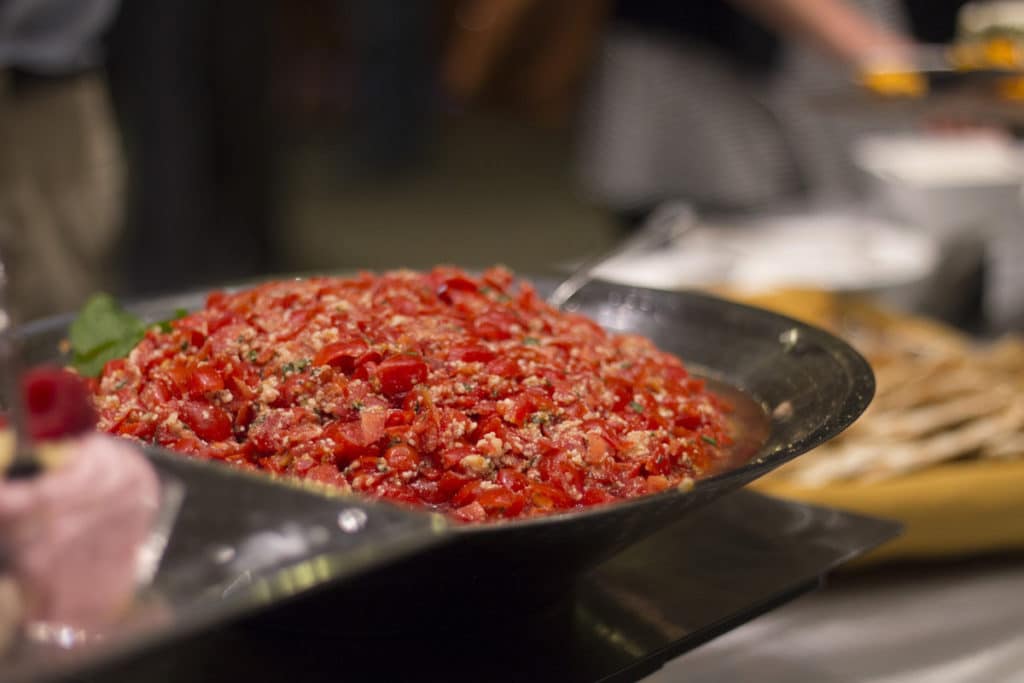
My Actual Prep Process
- Cool it completely if you’re working with cooked salsa. I once put warm salsa straight into the freezer and ended up with ice crystals everywhere and a lecture from my roommate.
- Give chunky salsa a quick blend. After my watery disaster, I now pulse chunky salsa 3-4 times in the food processor. It’s not smooth, but it’s not chunky enough to turn into salsa soup either.
- Remove the cilantro. I cannot emphasize this enough. Every. Single. Time.
- Label obsessively. Date, type of salsa, and heat level. I once grabbed what I thought was mild salsa for my nephew and… it was not mild. Learn from my mistakes.
How I Actually Freeze It
- Fill containers, leaving about half an inch of space for expansion (learned this when a container cracked)
- Remove air from bags – I use the water displacement method where you slowly lower the bag into a bowl of water to push air out
- Flash freeze ice cube trays before transferring to bags so they don’t stick together
- Store in the back of the freezer where temperature is most consistent
See it in Action
If you’d like a quick visual guide, this short video below shows the process of cooling, portioning, and freezing salsa using Souper Cubes. It’s a great reference for seeing how portion sizes and storage containers work in real life.
How Long Does Frozen Salsa Actually Last?
From my experience, frozen salsa is best within 1-2 months. I’ve kept it for 6 months and it’s still safe to eat, but the flavor definitely isn’t as bright and the texture gets progressively worse.
Watch for these red flags I’ve encountered:
- Faded color
- Ice crystals forming on top
- A watery layer when you open the container
- Any weird smell (though this has never happened with my properly frozen batches)
BTW: if you’ve ever found yourself with leftover guacamole, you can actually freeze that too.
What About Store-Bought Salsa?
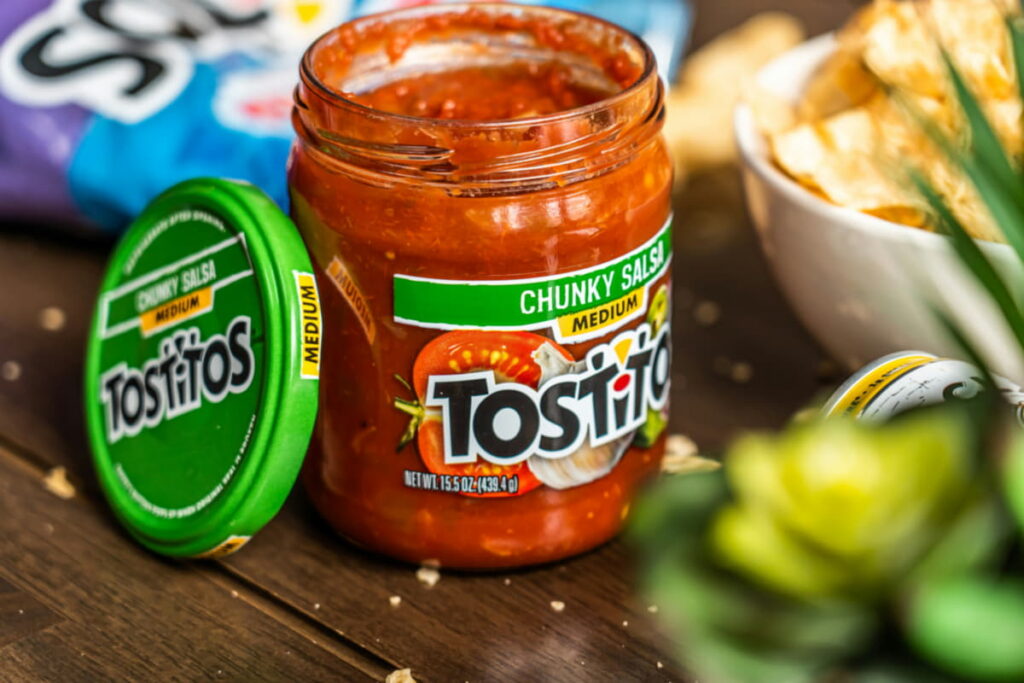
I get this question a lot: Can you freeze store-bought salsa, like Tostitos or Pace? Technically, yes, but there are a few important things to know first.
Here’s the quick version:
- Don’t freeze it in the jar. Glass can crack as the salsa expands, and even if it doesn’t, you’ll end up with watery, separated salsa when it thaws.
- Transfer it first. Move the salsa to a freezer-safe container or heavy-duty freezer bag. Leave about ½ inch of space for expansion.
- Shelf-stable salsas freeze best. Brands like Tostitos or Pace already contain stabilizers, so they hold up better than fresh or homemade versions.
- Expect some texture change. It may be a little thinner after thawing, but a quick stir usually fixes it.
- Fresh, refrigerated salsas don’t freeze well. Pico de gallo or “fresh” restaurant-style tubs get mushy, best to enjoy those fresh.
Freezing store-bought salsa can work in a pinch, but proper prep makes all the difference between a decent thaw and a soupy mess.
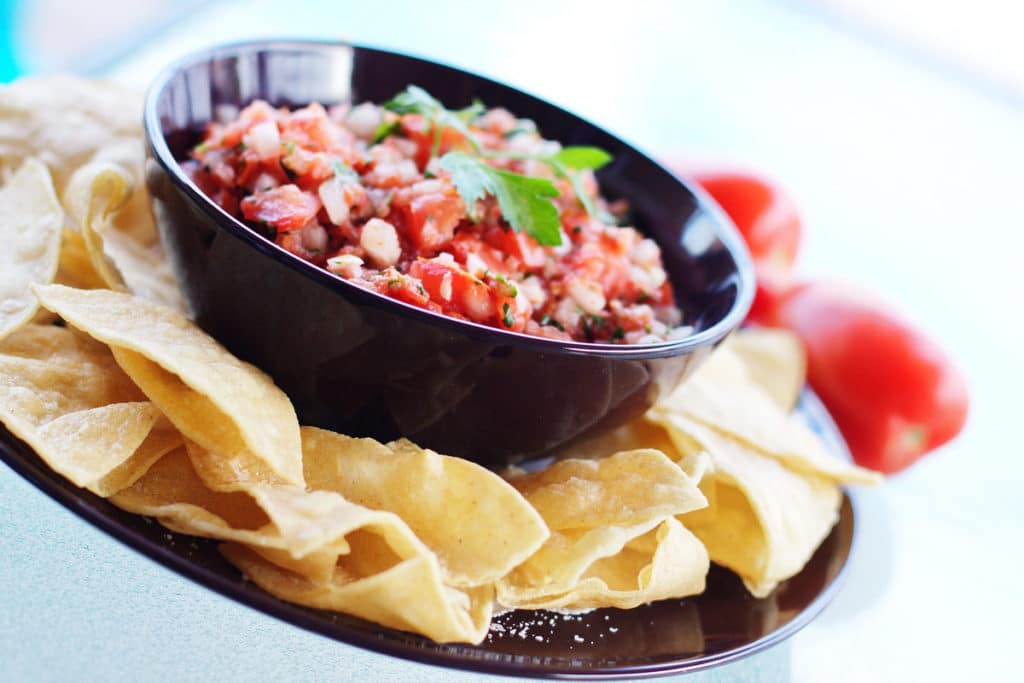
How to Thaw and Use Frozen Salsa
When you’re ready to use your frozen salsa, thaw it slowly in the fridge overnight. Avoid leaving it on the counter, that puts it in the food safety “danger zone.”
Once thawed, you might notice some separation or extra liquid. That’s totally normal:
- Stir it well to bring it back together.
- Drain a little liquid if it’s too thin for dipping.
- Freshen it up with chopped cilantro, lime juice, or diced onion before serving.
Frozen salsa shines as a cooking ingredient, I love adding it to scrambled eggs, soups, tacos, or enchiladas. The texture changes that make it less ideal for dipping don’t matter at all once it’s cooked into something else.
Is Freezing Salsa Worth It?
Absolutely, freezing salsa is worth it when you do it right. The texture changes a little, but the flavor stays bold, and it’s a total time-saver for quick meals. Once you get the hang of portioning and adding a few fresh touches after thawing, it becomes one of those freezer habits you’ll keep doing.
If you’re ready to stock your freezer like a pro, check out my full Freezing Guide, it covers everything from sauces to veggies.
Have your own salsa-freezing trick (or a fail you learned from)? Drop it in the comments, I’d love to hear how it went!g for that flavor and texture that you love. Freezing should be consider if you plan on using the salsa while cooking or as a last resort.
